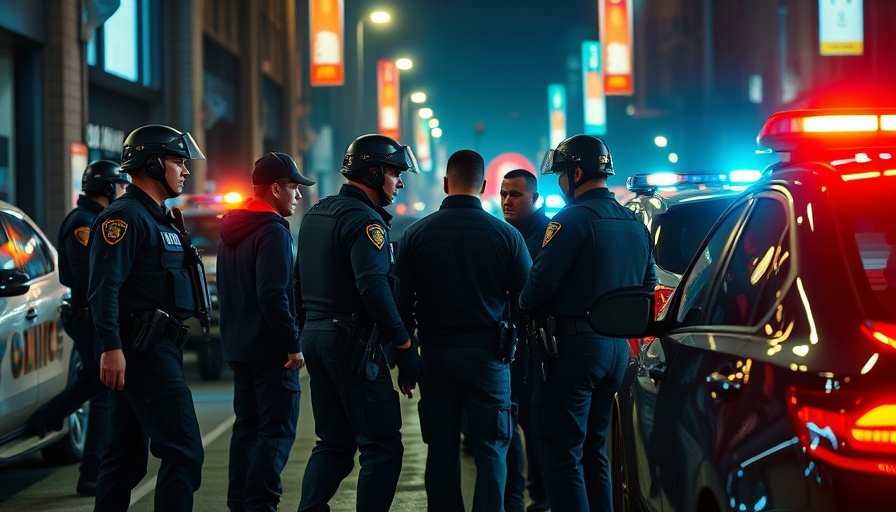
Trump’s Crime-Free Declaration: A Controversial Shift in DC
In an audacious move that reverberated throughout the nation, former President Donald Trump declared Washington, D.C. a "Crime-Free Zone" amid his federal crackdown on crime. This declaration comes on the heels of deploying 800 National Guard troops to the city, resulting in over 550 arrests and a notable 40% reduction in robberies, as reported by various news outlets.
Trump’s proclamation aims to cast a vision of safety in the U.S. capital, but it’s essential to understand the motivations and implications behind such bold claims. While the statistics boast improvements in law enforcement effectiveness, detractors argue this rhetoric undermines the complexities of crime in urban areas.
The National Context of Crime and Politics
The sentiment surrounding crime is not unique to D.C.; it is reflected in national discussions. With rising concerns about public safety, crime rates have become a hot-button issue across the United States. In many cities, similar crackdowns have led to significant arrests but have also raised questions about community policing strategies and their long-term sustainability.
Recent studies indicate that while an aggressive law enforcement presence can temporarily reduce crime, it doesn’t address the underlying social issues that drive criminal behavior. This creates a dichotomy where immediate solutions are prioritized over more complex, systemic changes that could lead to lasting peace.
Public Reaction: Divided Opinions
The declaration has drawn mixed responses from residents, law enforcement, and political figures. Supporters argue that assertive measures are necessary to maintain order and security in the nation’s capital. They point to the tangible results in crime reduction as evidence of success.
However, critics maintain that such measures could lead to racial profiling and disproportionate targeting of marginalized communities. The former D.C. attorney general voiced concerns over a lack of focus on restorative justice practices, which address harm while promoting healing within the community.
Comparative Examples from Other Cities
Washington D.C.'s approach to crime can be compared to recent initiatives in cities like New York and Chicago, where local governments have opted for alternative strategies that emphasize community engagement and preventative measures. In both cities, a shift towards collaborative processes has shown mixed results, prompting debate about which methodology truly leads to long-term safety and well-being.
As cities grapple with rising crime rates, the juxtaposition of hardline policing versus community-oriented strategies continues to shape public policies. It begs the question: how do we create safer environments without alienating those we seek to protect?
Future Predictions: The Road Ahead for Washington D.C.
As D.C. navigates its current path, several upcoming challenges loom on the horizon. Local elections will play a significant role in determining how crime policies evolve, and community feedback will be crucial in shaping those decisions. Additionally, shifting national sentiments towards policing methods may influence D.C.'s approach, particularly given the scrutiny of law enforcement tactics across the country.
With increases in federal powers to manage states' crime levels, a broader conversation about the balance of power and local governance will become imperatively necessary. Advocates for community safety will likely push for reforms that align with the needs of citizens while maintaining accountability.
Conclusion: Engaging with the Future of Crime Policy
The declaration of Washington D.C. as a "Crime-Free Zone," amidst a federal crackdown, offers a stark illustration of the ongoing fight over how best to ensure safety and order in urban areas. While statistics may paint a picture of success, it’s clear that multiple sides and complexities exist within this debate. To foster a truly safe environment, ongoing dialogue, community engagement, and systemic change are essential.
As citizens, staying engaged with law enforcement initiatives, understanding the implications of political rhetoric, and demanding transparency from government officials will be critical to shaping the future of public safety in America. It is in this shared responsibility that we can move towards the reality of safety and justice for all.
 Add Element
Add Element  Add Row
Add Row 



Write A Comment